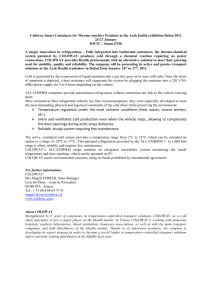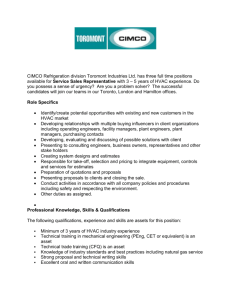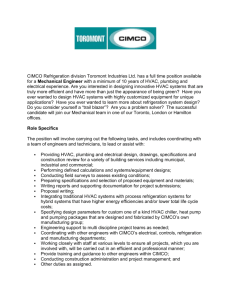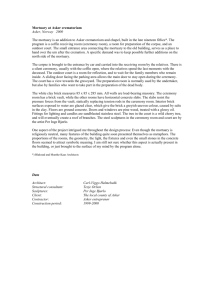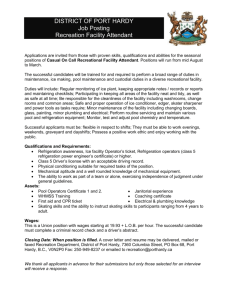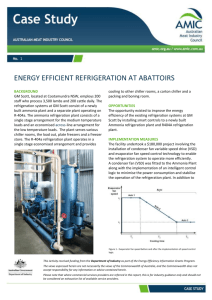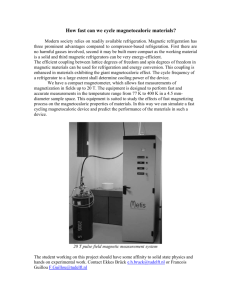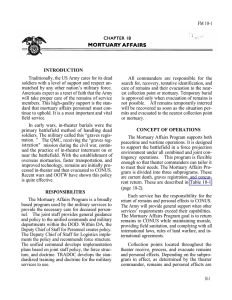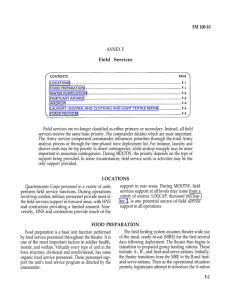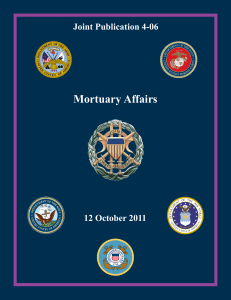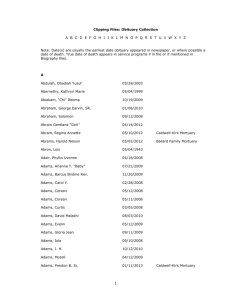Appendix A (ii) - Corporate Property Fridges report
advertisement
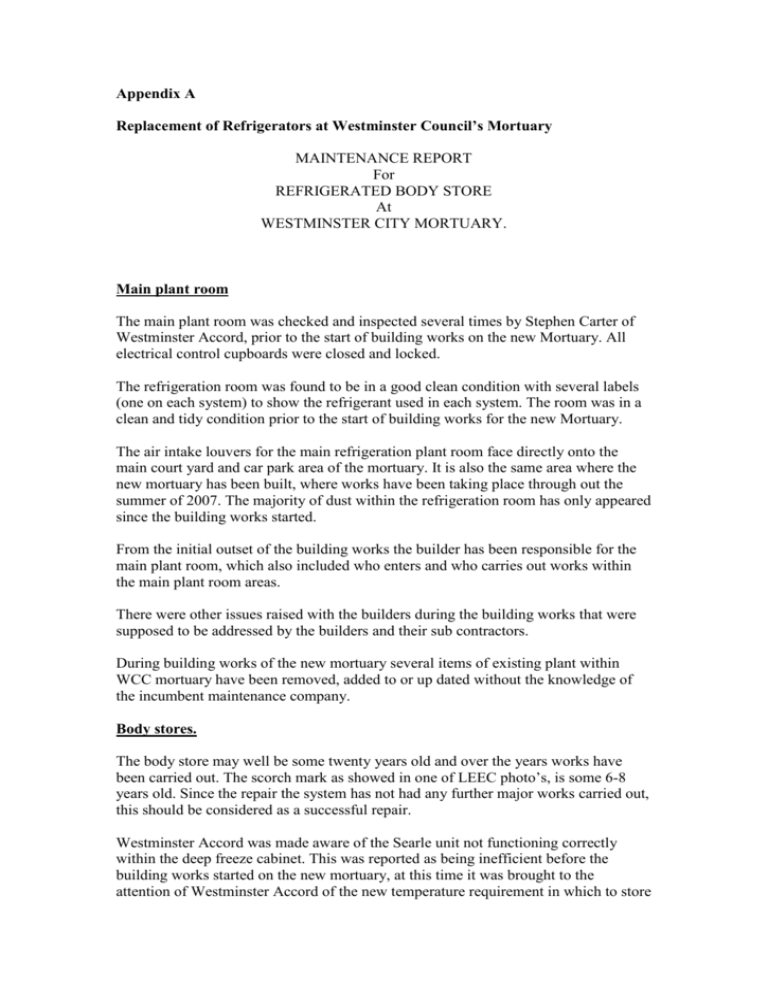
Appendix A Replacement of Refrigerators at Westminster Council’s Mortuary MAINTENANCE REPORT For REFRIGERATED BODY STORE At WESTMINSTER CITY MORTUARY. Main plant room The main plant room was checked and inspected several times by Stephen Carter of Westminster Accord, prior to the start of building works on the new Mortuary. All electrical control cupboards were closed and locked. The refrigeration room was found to be in a good clean condition with several labels (one on each system) to show the refrigerant used in each system. The room was in a clean and tidy condition prior to the start of building works for the new Mortuary. The air intake louvers for the main refrigeration plant room face directly onto the main court yard and car park area of the mortuary. It is also the same area where the new mortuary has been built, where works have been taking place through out the summer of 2007. The majority of dust within the refrigeration room has only appeared since the building works started. From the initial outset of the building works the builder has been responsible for the main plant room, which also included who enters and who carries out works within the main plant room areas. There were other issues raised with the builders during the building works that were supposed to be addressed by the builders and their sub contractors. During building works of the new mortuary several items of existing plant within WCC mortuary have been removed, added to or up dated without the knowledge of the incumbent maintenance company. Body stores. The body store may well be some twenty years old and over the years works have been carried out. The scorch mark as showed in one of LEEC photo’s, is some 6-8 years old. Since the repair the system has not had any further major works carried out, this should be considered as a successful repair. Westminster Accord was made aware of the Searle unit not functioning correctly within the deep freeze cabinet. This was reported as being inefficient before the building works started on the new mortuary, at this time it was brought to the attention of Westminster Accord of the new temperature requirement in which to store bodies this has been lowered from –15 to –18 degrees. Therefore before ordering a new Searle unit it had to be determined that existing plant could operate and maintain this new lower temperature. Searle advised the unit could only be guaranteed at –15, on receiving this information it was decided to order an evaporator that could operate and maintain –20 as delivery was 10 weeks from date of order. The maintenance contractor questioned Searle as to the compatibility of the existing refrigeration condenser to the new Evaporator. Searle advised no upgrade of the condenser was required for the operation of the new condenser. The internals of all the body stores cannot be cleaned due to the design, operation and equipment installed in each of the body stores. No operational alarms for temperature or refrigeration failure alarms are present. The only means of recording the operating temperature of each body store is by the external temperature gauge in the body handling area. There is nothing wrong with this method provided (like the electronic temperature equipment) that it is calibrated annually. Over the operational period of the body store, only one door handle on the deep freeze doors has been modified. It was modified in such a way that by only operating one handle the door was easy to open. The locking mechanism was by bars on the inside of the door which when activated, locked the door at the top and bottom, which also gave the door a tighter seal. The incumbent maintenance contractor has reported of deteriorating gaskets and seals, and various corroding screws. It is believed the height of the concrete base was designed around the body trolleys, for ease of removing and replacing bodies. CONCLUSION The storeage units are old but are still operational where parts can easily be obtained. Currently there is no cleaning regime in place due to the design of the body store. The construction seems to be adequate but would benefit from new seals and gaskets. It may be a requirement to up date the interior of all the body stores. The refrigeration units are operational and are currently operating on R134a refrigerant except the deep freeze which operates on R404a, which is not due to be phased out in 2010 and complies with the F-Gas regulations unlike R22. The plant and refrigeration rooms will be required to be cleaned by the builder prior to the builder leaving site. RECOMMENDATIONS In order for the Mortuary staff to put a cleaning regime in place it will be necessary to up date all the refrigeration plant so that each body store can freeze down to –20. By all the body stores being able to operate at this temperature it will be possible to transfer bodies so that one body stores can be emptied for cleaning purposes. The body stores would benefit from the installation of a separate electronic temperature monitor and alarm or if it could be installed into the Trend BMS system located in the main control panel in the boiler room. A full survey be carried out to ascertain if it is cost effective to update the existing body stores so that each body store can be modified with new door handles, gaskets, seals and to upgrade all of the refrigeration systems to operate at –20. Also, to install a remote temperature monitoring/alarm system. Or to replace the whole of the body store with new to achieve the recommendations as listed above. The present maintenance contractor has appointed a specialist refrigeration company to attend and carry out a survey as specified above. Dates of the attendance to be forwarded when we are advised.

